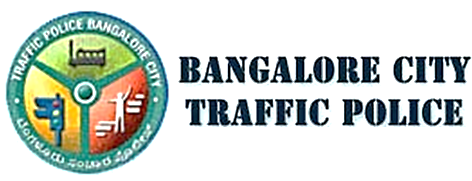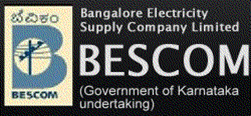HOT TOPICS
SPOTLIGHT AGENCIES
|
Traffic /Transport Issues & CTTP-2007 - 3 (Projected Mass Transport - Desirable.JPG) Naveen - 10-APR-2008This image was uploaded with the post Traffic /Transport Issues & CTTP-2007 - 3. |
|
Traffic /Transport Issues & CTTP-2007 - 3 (CTTP - No MRTS within SE CBD.JPG) Naveen - 10-APR-2008
|
|
Part II: Non-Motorised User Facilities Naveen - 10-APR-2008
Pedestrian Facilities
Excerpts from various sections of the CTTP report are as follows : 3.13.1.9: There is high pedestrian traffic in core area and some other areas in Bangalore. Footpath facilities are generally not adequate and their condition is deteriorating. Therefore up gradation of their facilities is very important. 5.5.8 (Preferred Strategy for Transport Development): Special facilities for pedestrians within the entire network specially in the core areas; Pedestrianization of selected shopping streets in side the core area going to be served by Underground sections of Metro; Provision of pedestrian sky walks, under passes, footpaths and other road furniture along the roads where necessary. 7.9: Recommends as many as 78 roads within ORR & 54 roads outside ORR for improvements & widening. 7.11.2.2 (Foot paths): Recommends a width of 2.0m for sidewalks for about 350 kms of city roads. |
|
Naveen - 10-APR-2008
Bus Rapid Transit System (BRTS)
Earlier (1999), a feasibility study for BRTS had identified a promising network of 20 corridors for bus routes comprising twin central rings intersected by 8 radial routes, with assistance from SIDA, Sweden. A pilot project of 12kms from Jayanagar to Shivajinagar with a combination of exclusive lanes with priority of passage at signals & construction of rapid transit lines was planned but never materialized & was abandoned without any attempt. There is no mention of this in the CTTP-2007 report, either. If this had commenced then, we might have seen it progress to some extent & at least, public opinion about the value of such quicker means of public travel would have been recognized. |
|
Bengloorappa - 8-APR-2008
I am trying to enlist here some of the best practices that I have seen/heard about City Management. Please feel free to add, edit/dissect as you may please. 1. Locality based Infrastructure Management - A la Delhi model can be adopted by empowering local Residents' associations, where available, to get Infrastructure like Roads, Parks, Water and Waste management managed and maintained on a locality basis and make engineers and other city corporation employees answerable to such associations as well as to their own management. This can lead to quick addressal of grievances and form power centres for effective infra management. In Delhi, residents' associations are headed by retired govt. employees who have plenty of time on their hands and a vision for their locality. |
|
ssheragu - 2-APR-2008
|
|
Urban Rail - The Chennai Experience Naveen - 1-APR-2008
Sometime back, I remember reading a report in a magazine (published from either HongKong or Singapore) about the Chennai Suburban Rail (CRS) & the newer MRTS. This report, I think was actually based on a study for economic assistance for expansion of the Chennai MRTS (Phases 2 & 3). |
|
Naveen - 26-MAR-2008
This refers to the article in TOI & the guest column by Muralidhar Rao. The basic premise on which public transport is based is that if the road seems too narrow with high volumes of traffic, there is a case for public transport. The higher the volume of traffic on a road, the stronger is the case for public transport. In India, the low–cost /low–quality public buses are now not preferred by the upwardly mobile strata. Rail-based systems (such as Metro /Monorail) are very expensive to build & maintain & will therefore, not have extensive reach for a long time to come. The city cannot make do with widening roads & adding elevated roads continuously. No city has ever been able to “build” its way out of the problem. A new, faster & cost efficient system is required for quality conscious groups, over & above the existing low quality bus network. BRTS fulfills these requirements & is perhaps, the only available alternative worth exploring. |
|
The Traffic Quagmire – Using Logic & Rationality the Right Way Naveen - 25-MAR-2008
Vasanth - your post ‘Using Technology the Right Way’ made good reading. We can come up with umpteen reasons for the chaos that traffic is, but simply put, there is just one real core issue – the city is trying to cope with traffic loads for which it’s road network certainly was never designed nor envisaged. Despite having lost the battle time & again, all efforts so far have been to satisfy the ‘Car lobbies’, even at the expense of pedestrians, bicyclists & public transport users. Planning & Construction of the Metro rail is the only exception.Plans, policies & procedures that involve a multi-dimensional approach to seek long-term & permanent solutions have never materialized, though efforts have been made. |
|
tsubba - 14-MAR-2008
A technical committee comprising of town planners, structural
engineers, architects, representatives from the Fire Force, Airports
Authority of India, Bangalore Metropolitan Region Development Authority
(BMRDA), BDA and other service providers of the city is working on the
revision of building bylaws for Bangalore based on the recommendations
of the masterplan 2015. It will take atleast 3 months for the committee
to work on the changes, then a draft will be sent to govt for approval.
After this there is a month's time for citizens to file any objections.
(Source: Building bylaws being revised,
DH ) |





